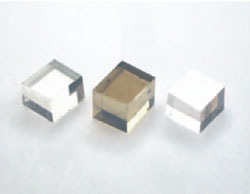 So far, diamonds had always been considered perfect for making jewelery or for cutting through the toughest materials on earth. Still, due to their perfect carbonic structure, diamonds prove themselves very good electric insulators and in some cases can act just like a semiconductor.
So far, diamonds had always been considered perfect for making jewelery or for cutting through the toughest materials on earth. Still, due to their perfect carbonic structure, diamonds prove themselves very good electric insulators and in some cases can act just like a semiconductor.
A team of Japanese researchers from the Diamond Research Laboratory of the National Institute of Advanced Industrial Science and Technology (AIST) in Japan, led by Shinichi Shikata, have developed a quicker method for making artificial diamonds so that they’re able to be used in electronic devices, mostly in electric and hybrid cars.
Usually, artificial diamonds are made by decomposing methane gas in a high-power microwave oven at temperatures of about 1,000 °C. The team found a way to accelerate the process and produced the one of the biggest artificial diamonds, measuring 2.3 centimeters and 0.4 millimeter thick.
Adding tiny amounts of boric acid and some other substances in the process of methane decomposition makes the resulted diamond act as a very good semiconductor with very good thermal conductivity as well. The resulted diamond also outweighs silicon by resisting at much higher voltages.
Because of their excellent heat-transferring efficiency, diamonds wouldn’t need much cooling, like silicon does. They would be perfect for use in electric/hybrid cars, where there are high voltages and currents. The use of diamonds in these applications could even yield power savings of about 960 kWh per year in a hybrid car, and could eventually lead to some 5 million tons less carbon dioxide emitted over a period of 40 years.
“Our goal is for diamond elements to be in practical use within 10 to 15 years. If mass-produced, their production cost would be comparable to that of silicon-based elements,” said Shikata.
By manipulating the elemental composition of the carbon flakes, the resulting artificial diamond’s heat conductivity can be increased by 150 percent, and have the ability to latch on to electrons, Shikata said. “We can apply this phenomenon to the production of a high-performance transistor,” he also mentioned.
Letting aside the carbon savings that the inclusion of diamonds in cars’ power control systems could get us, the power savings that could be obtained by using them would surely be of benefit to everyone. One condition would still have to be satisfied, though: they’d have to be as cheap as silicon.
via physorg

































